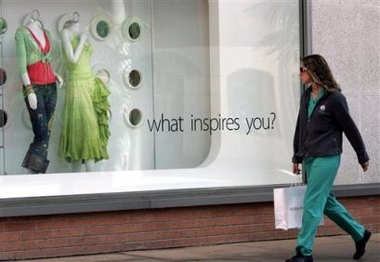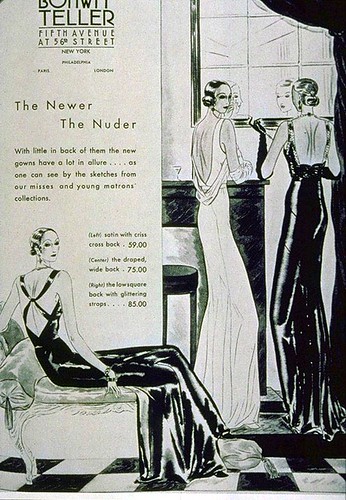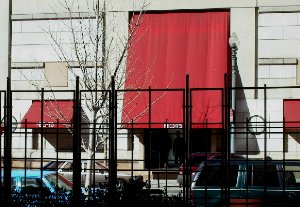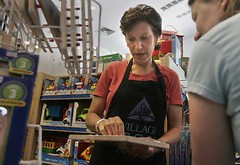(The) Anchor(')s (Going) Away
 A shopper looks at a Macy's display at Stanford Shopping Center in Palo Alto, Calif., Wednesday, July 6, 2005. The arrival of summer gave the nation's retailers their best showing in months in June (AP Photo/Paul Sakuma)
A shopper looks at a Macy's display at Stanford Shopping Center in Palo Alto, Calif., Wednesday, July 6, 2005. The arrival of summer gave the nation's retailers their best showing in months in June (AP Photo/Paul Sakuma)At a presentation at the Congress for the New Urbanism annual meeting in DC a couple summers ago, Robert Gibbs and Peter Katz did a great presentation about regionalism generally as well as the retail industry dimensions influenced by regionalism. I can't find my notes, but Bob Gibbs laid out how the industry works, and provided general numbers on how many people (households) particular types of retail formats need to be successful.
He also explained in a very understandable way, why department stores seek subsidies to support locating new stores. (Granted traditional department stores are a format under great stress, given the just approved Federated-May's merger which will impact many communities.)
The point he made is something that we all know, that department stores are anchors for the surrounding retail district. Such stores spend millions of dollars each year in advertising (and this merger will hurt local newspapers tremendously as instead of running Hecht's and Macy's ads, they will only be left with "Macy's" ads) and this advertising attracts customers not only to the department store, but to the other stores, services, and restaurants around it. Since the overall commercial district benefits, it's reasonable to provide some financial support in return.
 "Back in the Day" advertising in the newspaper.
"Back in the Day" advertising in the newspaper. Bob Gibbs and I talked afterwards. He's based in Birmingham, Michigan, which is the town next to the one I lived in during my secondary school years, so it's a commercial district I am quite familiar with. For decades, it benefited from having stores from two independent regional department store chains. The companies--Crowley's and Jacobson's--kept many of their stores in traditional commercial districts, rather than putting them all in malls. This was atypical in the industry (see the chapter on Boscov's buying and destroying independent town-based department stores in Pennsylvania, in Gratz's The Living City).
He told me that as these stores closed, the retail mix in Birmingham changed significantly, skewing more to night time entertainment, and that crime (stabbings, etc.) was on the increase.
He said that the city had the opportunity to attract a Lord and Taylor store (another May Dept. Stores division, with a big presence in Metro Detroit) but the city wouldn't provide the "small" million dollar incentive package that the company wanted. Gibbs calls this type of incentive a "kiss" to the department store from the locality.
Jacobson's and Crowley's had stores around the area, in places like Grosse Pointe, Ann Arbor, Dearborn, etc., and gave a lot of life to these non-mall commercial districts. Their loss is yet one more blow to community economies in Michigan.
This article in the Detroit News, "Merchants hope for area rebound: The Village retailers in Grosse Pointe struggle without big draw, look at plans to develop vacancy," discusses the impact of department store closure in Grosse Pointe, Michigan. It's been three years since Jacobson's closed, but the local retailers are still feeling the pain. As one store owner said "It's been a struggle for about two years," said Durand, who estimates her sales have dropped 15 percent since Jacobson's closed. "People would come out to go to Jacobson's and make several other stops. "(Jacobson's) tied us all together. Right now we don't have a tie. That's very frustrating for us," she said."
 Hecht's in downtown Washington.
Hecht's in downtown Washington.Macy's recent combination of regional department stores into Macy's means the same for Hecht's. Some stores will close. Cities like Philadelphia face the closure of city-based stores. So probably do many cities on the West Coast.
However, certain May Department Store chains aren't likely to experience much in the way of store closures, because their trade areas don't overlap with other Federated divisions.
 Liz Orozco / The Detroit News. Village Toy Co., Grosse Pointe, Michigan. Store owner Ellen Durand helps Anita Johnston look for a gift.
Liz Orozco / The Detroit News. Village Toy Co., Grosse Pointe, Michigan. Store owner Ellen Durand helps Anita Johnston look for a gift.



0 Comments:
Post a Comment
<< Home